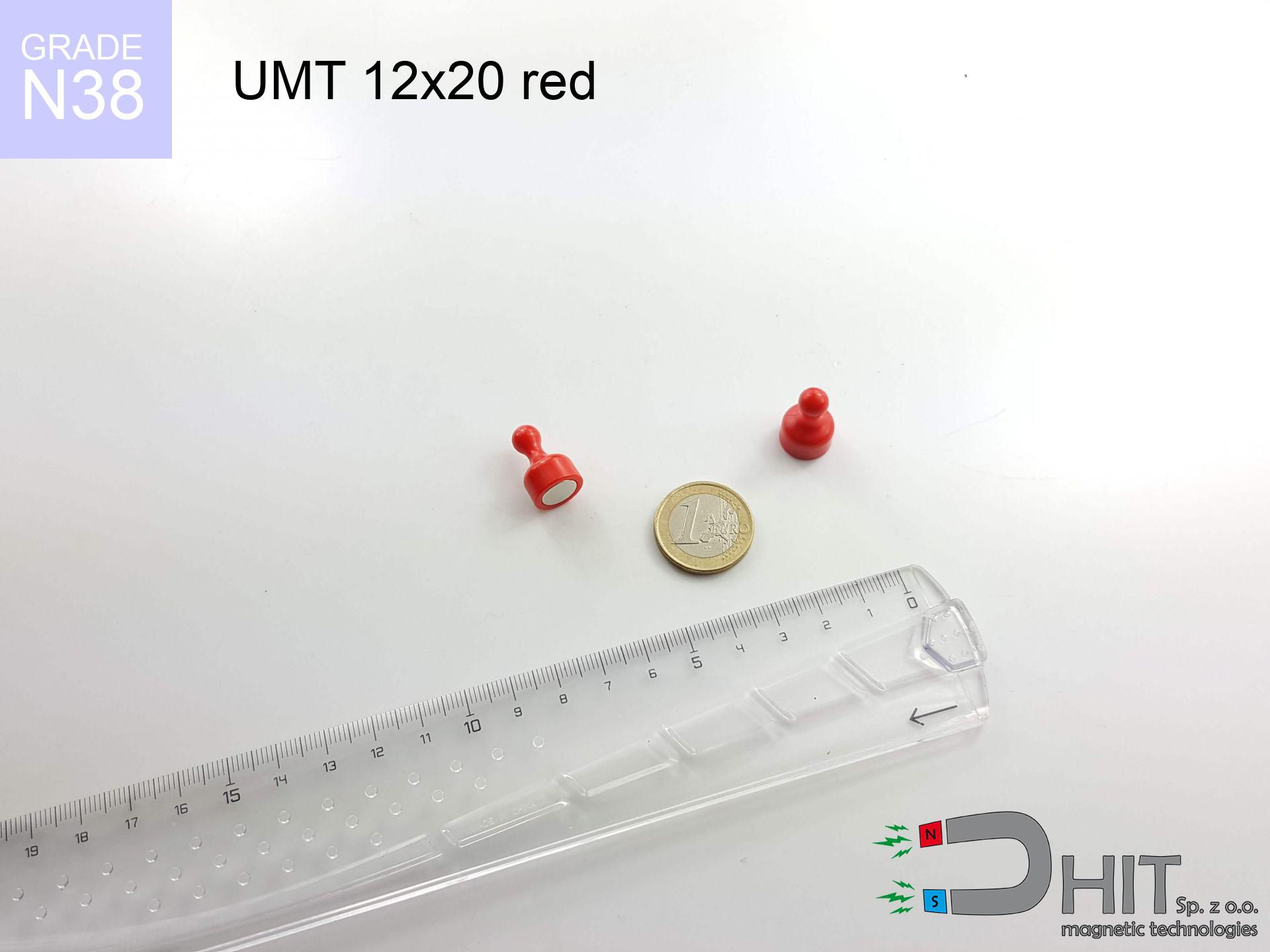KM HF - 11,3 kg - magnetic bracket
magnetic bracket
Catalog no 170256
GTIN/EAN: 5906301813682
Weight
304 g
Load capacity
11.30 kg / 110.82 N
24.60 ZŁ with VAT / pcs + price for transport
20.00 ZŁ net + 23% VAT / pcs
bulk discounts:
Need more?
Pick up the phone and ask
+48 22 499 98 98
if you prefer send us a note by means of
inquiry form
our website.
Force and form of a magnet can be estimated on our
magnetic calculator.
Same-day shipping for orders placed before 14:00.
Technical - KM HF - 11,3 kg - magnetic bracket
Specification / characteristics - KM HF - 11,3 kg - magnetic bracket
| properties | values |
|---|---|
| Cat. no. | 170256 |
| GTIN/EAN | 5906301813682 |
| Production/Distribution | Dhit sp. z o.o. |
| Country of origin | Poland / China / Germany |
| Customs code | 85059029 |
| Weight | 304 g |
| Load capacity ~ ? | 11.30 kg / 110.82 N |
| Manufacturing Tolerance | ±1 mm |
Physical properties of sintered neodymium magnets Nd2Fe14B at 20°C
| properties | values | units |
|---|---|---|
| Vickers hardness | ≥550 | Hv |
| Density | ≥7.4 | g/cm3 |
| Curie Temperature TC | 312 - 380 | °C |
| Curie Temperature TF | 593 - 716 | °F |
| Specific resistance | 150 | μΩ⋅cm |
| Bending strength | 250 | MPa |
| Compressive strength | 1000~1100 | MPa |
| Thermal expansion parallel (∥) to orientation (M) | (3-4) x 10-6 | °C-1 |
| Thermal expansion perpendicular (⊥) to orientation (M) | -(1-3) x 10-6 | °C-1 |
| Young's modulus | 1.7 x 104 | kg/mm² |
Material specification
| iron (Fe) | 64% – 68% |
| neodymium (Nd) | 29% – 32% |
| boron (B) | 1.1% – 1.2% |
| dysprosium (Dy) | 0.5% – 2.0% |
| coating (Ni-Cu-Ni) | < 0.05% |
Environmental data
| recyclability (EoL) | 100% |
| recycled raw materials | ~10% (pre-cons) |
| carbon footprint | low / zredukowany |
| waste code (EWC) | 16 02 16 |
Check out also proposals
Strengths and weaknesses of Nd2Fe14B magnets.
Advantages
- They virtually do not lose power, because even after ten years the decline in efficiency is only ~1% (in laboratory conditions),
- They maintain their magnetic properties even under strong external field,
- In other words, due to the reflective finish of silver, the element gains visual value,
- They are known for high magnetic induction at the operating surface, which improves attraction properties,
- Neodymium magnets are characterized by very high magnetic induction on the magnet surface and are able to act (depending on the form) even at a temperature of 230°C or more...
- Due to the option of free forming and adaptation to custom solutions, neodymium magnets can be manufactured in a variety of geometric configurations, which amplifies use scope,
- Key role in high-tech industry – they are utilized in computer drives, drive modules, medical devices, and multitasking production systems.
- Compactness – despite small sizes they generate large force, making them ideal for precision applications
Weaknesses
- Susceptibility to cracking is one of their disadvantages. Upon strong impact they can break. We advise keeping them in a special holder, which not only secures them against impacts but also raises their durability
- When exposed to high temperature, neodymium magnets experience a drop in power. Often, when the temperature exceeds 80°C, their strength decreases (depending on the size and shape of the magnet). For those who need magnets for extreme conditions, we offer [AH] versions withstanding up to 230°C
- When exposed to humidity, magnets start to rust. To use them in conditions outside, it is recommended to use protective magnets, such as magnets in rubber or plastics, which prevent oxidation as well as corrosion.
- Due to limitations in realizing nuts and complex forms in magnets, we recommend using cover - magnetic holder.
- Potential hazard to health – tiny shards of magnets can be dangerous, if swallowed, which gains importance in the context of child safety. Additionally, small components of these devices can disrupt the diagnostic process medical when they are in the body.
- Higher cost of purchase is one of the disadvantages compared to ceramic magnets, especially in budget applications
Pull force analysis
Optimal lifting capacity of a neodymium magnet – what affects it?
- with the use of a yoke made of low-carbon steel, ensuring full magnetic saturation
- with a thickness minimum 10 mm
- with a plane perfectly flat
- under conditions of ideal adhesion (surface-to-surface)
- for force applied at a right angle (pull-off, not shear)
- at ambient temperature room level
Lifting capacity in practice – influencing factors
- Distance – existence of any layer (paint, tape, air) acts as an insulator, which lowers power steeply (even by 50% at 0.5 mm).
- Force direction – note that the magnet holds strongest perpendicularly. Under sliding down, the holding force drops drastically, often to levels of 20-30% of the maximum value.
- Steel thickness – too thin sheet causes magnetic saturation, causing part of the power to be wasted into the air.
- Chemical composition of the base – low-carbon steel gives the best results. Alloy steels lower magnetic permeability and lifting capacity.
- Surface quality – the smoother and more polished the surface, the better the adhesion and higher the lifting capacity. Roughness creates an air distance.
- Thermal conditions – NdFeB sinters have a negative temperature coefficient. When it is hot they are weaker, and at low temperatures they can be stronger (up to a certain limit).
Lifting capacity was determined by applying a smooth steel plate of suitable thickness (min. 20 mm), under vertically applied force, in contrast under parallel forces the holding force is lower. Additionally, even a small distance between the magnet and the plate reduces the holding force.
H&S for magnets
Threat to navigation
Navigation devices and smartphones are extremely susceptible to magnetism. Direct contact with a strong magnet can permanently damage the internal compass in your phone.
Pacemakers
Patients with a heart stimulator must keep an safe separation from magnets. The magnetism can disrupt the operation of the implant.
Keep away from children
NdFeB magnets are not intended for children. Accidental ingestion of several magnets may result in them pinching intestinal walls, which constitutes a critical condition and requires urgent medical intervention.
Flammability
Powder created during cutting of magnets is self-igniting. Avoid drilling into magnets without proper cooling and knowledge.
Heat warning
Standard neodymium magnets (N-type) lose magnetization when the temperature exceeds 80°C. This process is irreversible.
Skin irritation risks
A percentage of the population experience a hypersensitivity to Ni, which is the common plating for NdFeB magnets. Frequent touching may cause dermatitis. It is best to use safety gloves.
Hand protection
Big blocks can crush fingers in a fraction of a second. Under no circumstances put your hand between two attracting surfaces.
Magnetic media
Avoid bringing magnets near a wallet, laptop, or screen. The magnetism can permanently damage these devices and wipe information from cards.
Shattering risk
Beware of splinters. Magnets can fracture upon violent connection, launching shards into the air. We recommend safety glasses.
Safe operation
Before use, read the rules. Uncontrolled attraction can destroy the magnet or injure your hand. Think ahead.




![SM 32x350 [2xM8] / N42 - magnetic separator SM 32x350 [2xM8] / N42 - magnetic separator](https://cdn3.dhit.pl/graphics/products/sm-32x350-2xm8-nih.jpg)
![UMGW 20x15x7 [M4] GW / N38 - magnetic holder internal thread UMGW 20x15x7 [M4] GW / N38 - magnetic holder internal thread](https://cdn3.dhit.pl/graphics/products/um-20x15x7-m4-gw-big.jpg)


